Redpoint Radar: The State of Search and AI's Prosumer Proliferation
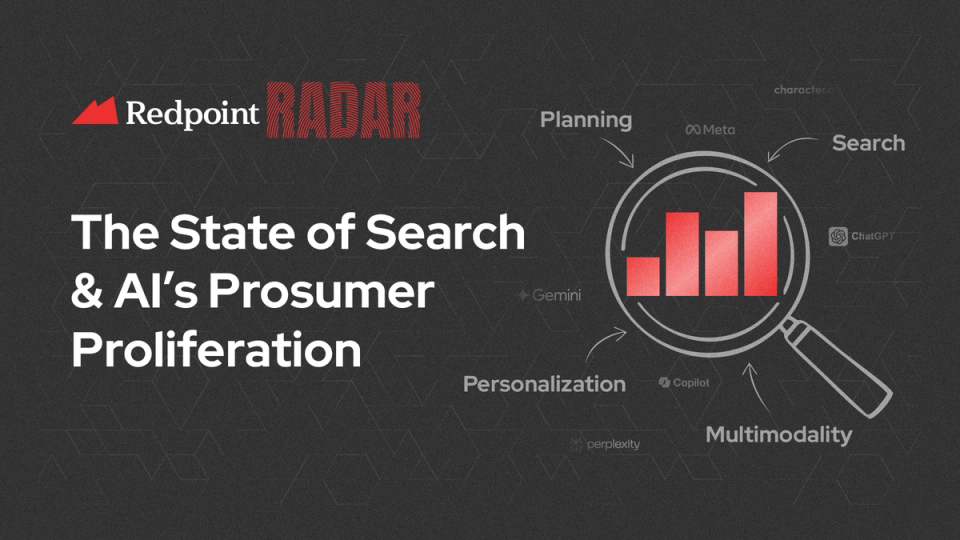
Like Dorothy entering Oz, consumers today are eager to see how AI’s expansion across search, discovery, and planning might open the door to a trendy, technicolor future. To better understand consumers’ usage, expectations, and aspirations with respect to all things AI, Team Redpoint (with the help of our partners at Centiment) surveyed 250 consumers this Fall – and what we discovered were aspirations that rivaled even our own optimistic outlook.
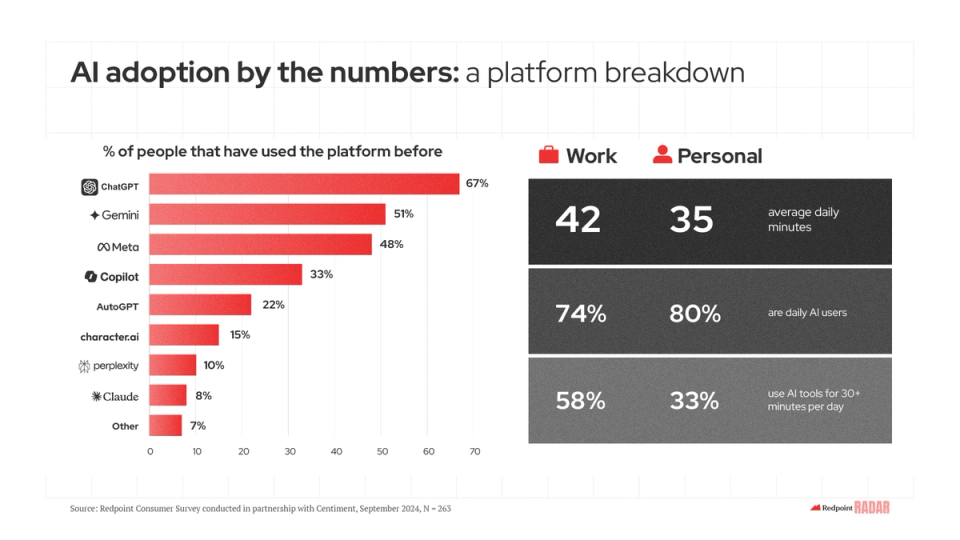
Techno-optimists believe that the next generation of AI tools will finally prioritize the individual over the masses. After years of SEO optimization and Google page placement dictating “relevance,” consumers are eager for tomorrow’s new AI-centric normal to usher in personalized, and dynamic responses that adapt to their intentions, values, and even moods. Imagine a world where Redpoint’s search results matched our style guide and color palette, or Meera’s search results reflected her propensity for a little glitter and glam. Glinda’s magic wand has nothing on the GPTs to come.
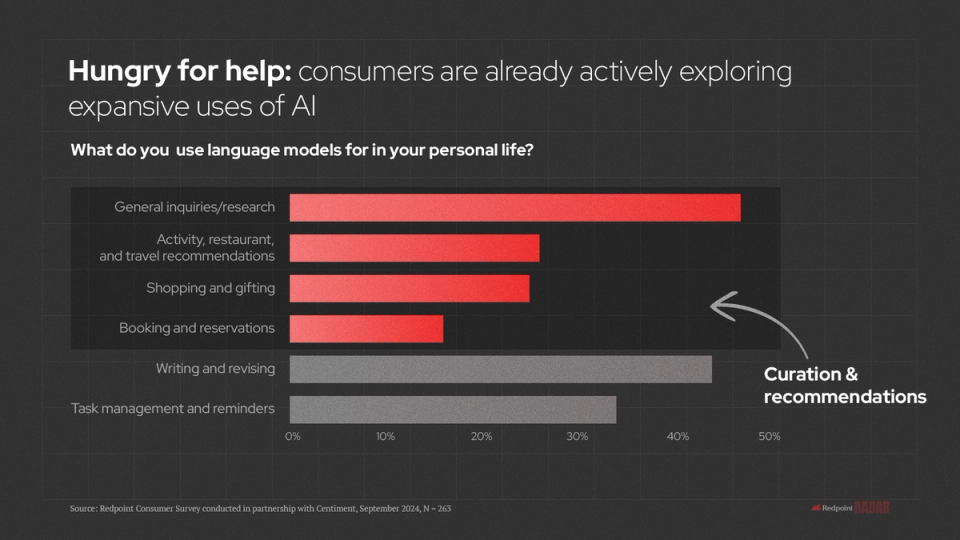
Yet consumers today (Team Redpoint included!) are begrudgingly awaiting this technicolor transformation, as they continue to rely upon traditional search engines in favor of their AI counterparts 2:1, prioritizing the certainty of the status quo over the creative potential of next gen apps.
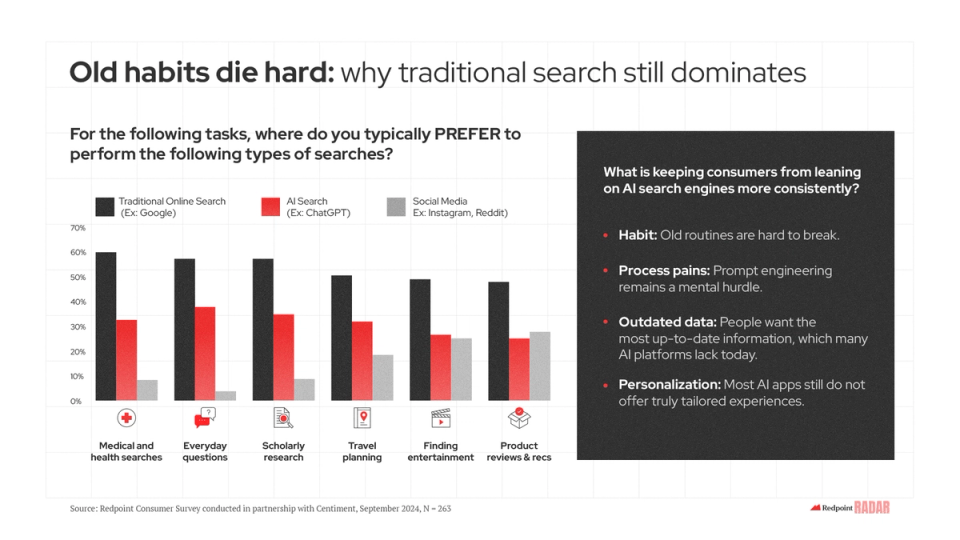
However, we know that both imagination and intention are there with >70% of consumers eager for AI to transform their shopping, planning, and booking experiences over the next 5 years. We at Redpoint fantasize about this future daily, whether we’re ideating upon a new event concept for our founders or dreaming up some new swag for our advisors. While we’ve talked in the past about concierge culture as a wedge, we indeed expect AI’s expanded sphere of influence to impact almost every interaction consumers have with technology over time.
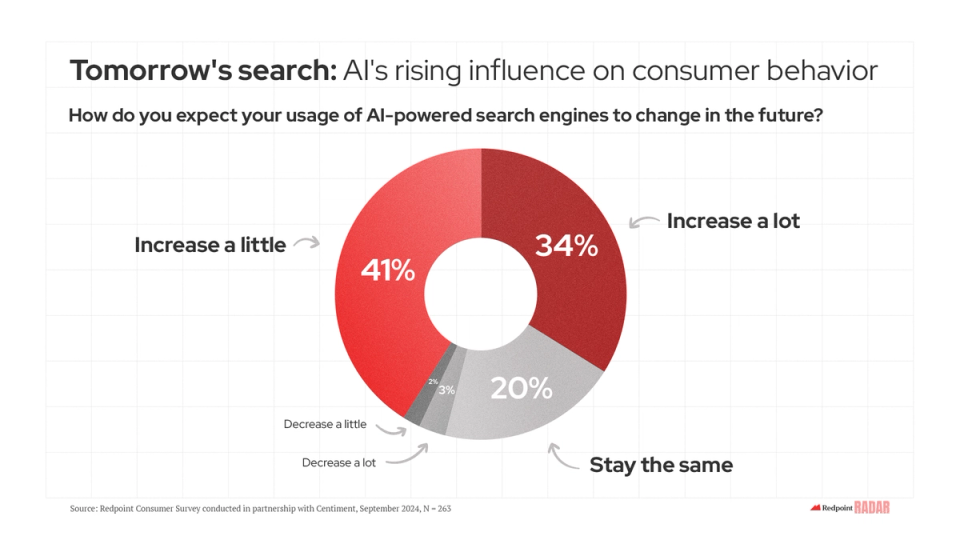
One factor that could be slowing wider AI adoption? Consumer trust. And as a firm that obsesses over the importance of trust, we can certainly relate. Tomorrow’s tools will need to further prove their credibility if they hope to pave consumers’ path to AI’s Emerald City.
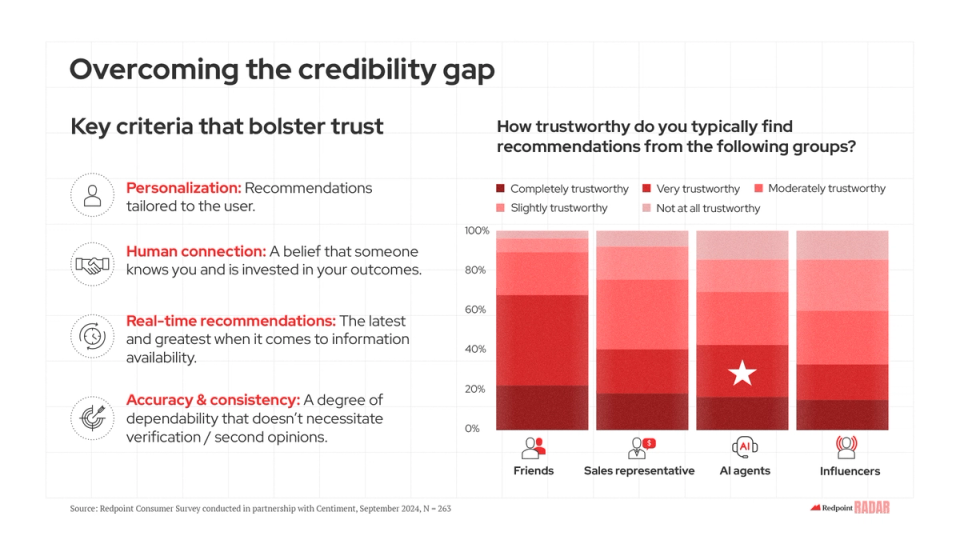
Adding Taste to the Toolkit
Our data suggests that what consumers continue to yearn for is taste, which we believe presents the key to unlocking enduring infatuation for AI applications. Today’s early apps offer a bland, black-and-white Kansas to consumers dreaming of a colorful, dynamic Oz. As the internet today continues to bombard consumers with near-unlimited choice and conflicting information, taste has emerged as the secret sauce for consumers, whether scrolling through their Instagram Discover page in search of destination inspo for an upcoming offsite or asking their coolest coworker (aka Josh) for a restaurant recommendation in Brooklyn.
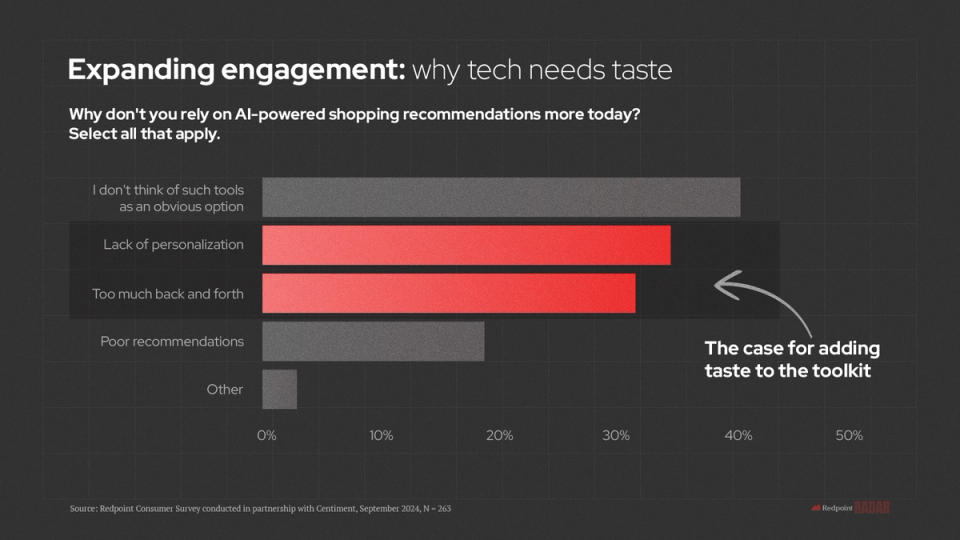
Taste, like trust, is tricky to pinpoint, making it an incredibly valuable asset. Taste is personal and often ephemeral. While social media has thrived as a medium for capturing and broadcasting taste in real-time, the traditional world wide web has struggled to keep up, especially as trends have evolved over time. Nuanced and personalized taste along every step of the search, discovery, and planning journey is what AI can uniquely deliver, and what we at Redpoint continue to dream of.
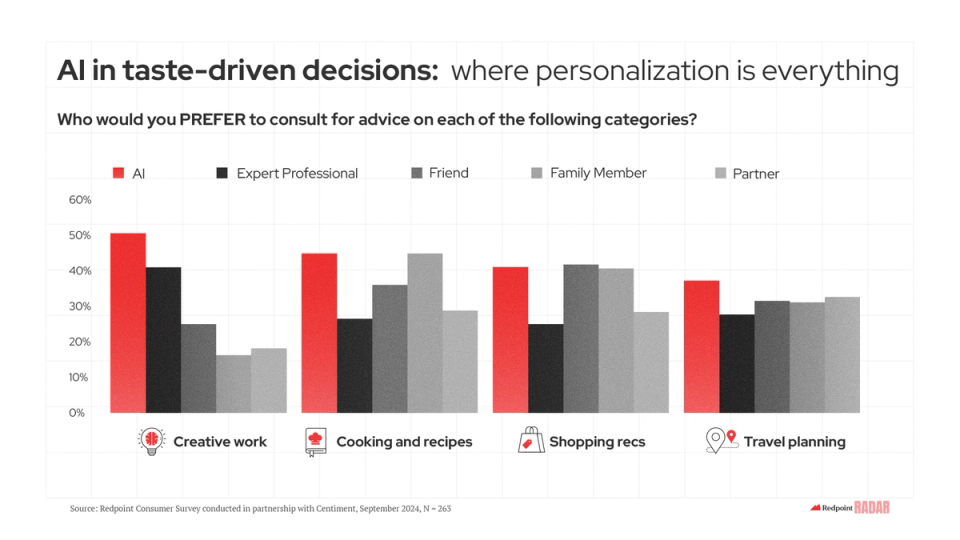
In a future where consumers’ own cultural context and preferred communication styles are reflected in the content they’re served, personal proclivities and real-time relevance will weigh as heavily on responses as semantic inputs. Herein lies consumers’ thirst for a new wave of AI native applications – and that thirst is creating a trillion-dollar opportunity for founders.
A User Inter-facelift
As the utility of tomorrow’s AI applications expands from search and discovery to planning and procurement, where and how we interact with them will likely evolve as consumers and prosumers alike increasingly expect ubiquitous access and form factor flexibility.
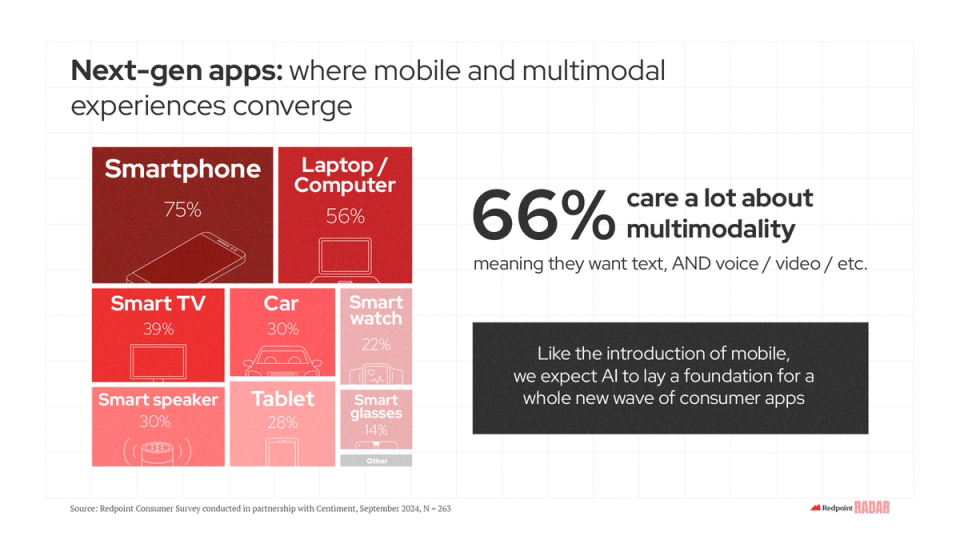
Current text-heavy chatbot interfaces constrain creativity and promote linear thinking through their binary back and forth, and the need for a new foundational unit of interaction has become increasingly apparent. From infinite canvases that expand iterative potential to media-rich formats that more effectively cater to creative capabilities, the tools that will define tomorrow’s era of omnipresent AI are just beginning to take shape today. As they mature, we imagine they will only deepen the relationship between consumers and the AI applications all around them.
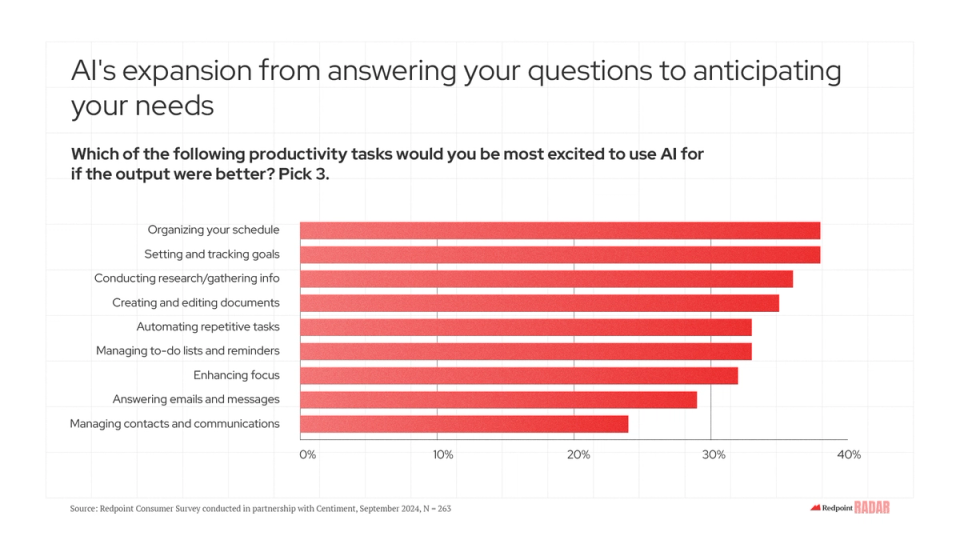
As consumers and prosumers alike turn to a new class of AI toolkits, there are few areas where we see as much opportunity as search, discovery, and planning’s trillion-dollar orbit. From creatively problem-solving your way down the Yellow Brick Road to planning the perfect trip home to Kansas, AI promises to give us all magic wands with powers we never thought possible. If you’re as excited about technology’s transformation of this category as we are, we’d love to hear from you.
"You've always had the power, my dear. You've had it all along.” – Glinda The Good Witch